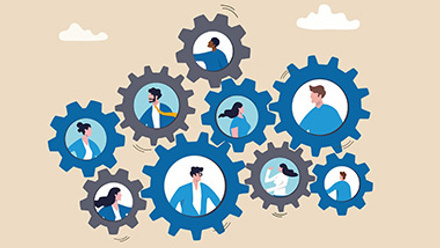Julie Moorad on creating a sustainability movement at Salesforce
Earlier this year, Salesforce added sustainability to its core company values – joining trust, customer success, innovation and equality. Sustainability has been elevated as a strategic business priority. It is integrated into our annual plan and is part of our long-term growth strategy.
In addition, for the first time, ESG goals will this year be tied to the variable pay of our executives, driving greater accountability internally. Equality measures will focus on increasing representation of black, Latinx, indigenous and multiracial employees in the US and female employees globally. Sustainability measures will deal with reducing air travel emissions and increasing spend with suppliers who have signed Salesforce’s Sustainability Exhibit – a procurement contract designed to reduce collective carbon footprints.
Stakeholder capitalism
Since it was founded 23 years ago, Salesforce’s operating model has aligned with the vision of stakeholder capitalism. The company exists to benefit not just its shareholders but all stakeholders, customers, employees, communities and the planet. This has been evident since day one with Salesforce’s pioneering of the 1-1-1 Model, in which the company commits 1% of its equity, product and employee time to improving the world – whether that’s improving education, equality or the environment. The model has since been adopted by other companies.
ESG programmes are scaled through the business, with dedicated teams that take a number of approaches to identify and meet goals. Our annual Stakeholder Impact Report outlines the targets we have set ourselves, their scope, and where we are in meeting them. To give three examples, Salesforce has contributed over $1.87bn (£1.15bn) to the global community in donated and discounted technology, achieved 100% renewable energy for our operations and committed to spending $100m (£80.3m) with black-owned businesses by 2023.
Two-way conversation
Our dedicated ESG strategy team focuses on communicating the impact of these programmes, positive or negative, to our stakeholders. To identify what topics to report on, Salesforce uses our materiality assessment, which helps establish areas that would potentially have an impact on the environment, society and our enterprise. We survey internal and external stakeholders – employees, investors, customers, suppliers and non-governmental organisations – to get their input. This two-way conversation helps us understand how our stakeholders are holding us accountable to establish ESG reporting and management strategies.
Education and mobilisation are equally important to our ESG strategy, and by prioritising engagement we can attract and retain top talent. We provide education both to internal and external stakeholders so they can act on our net-zero goals. We also have over 13,000 Earthforce champions among our 70,000-strong workforce. These employees volunteer to support us in taking climate action in the community and, along with the rest of our workforce, have the potential to influence their own personal networks. When I think about the full potential of Salesforce – that’s it: creating impact at scale.
This case study is taken from Sustainability is driving business change - Transforming Engagement Series 2022 report 4.







